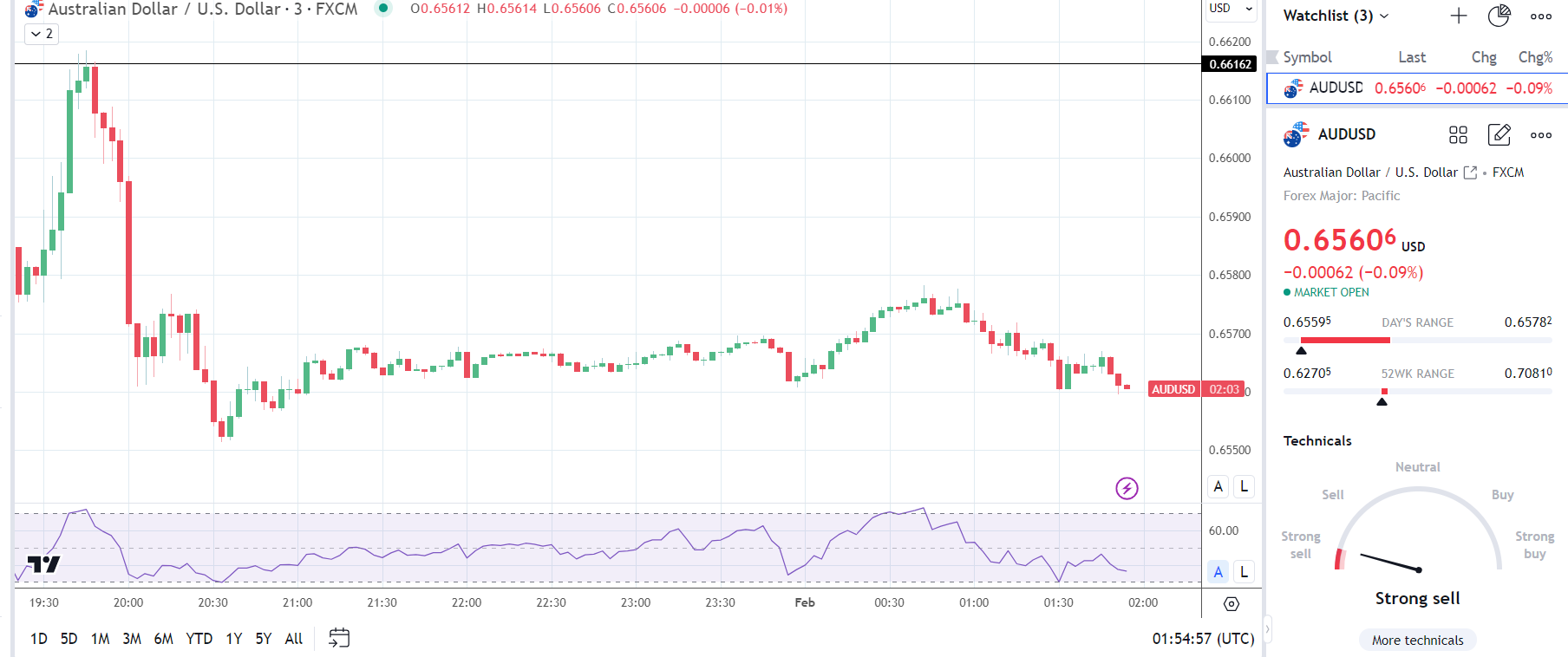
The China Caixin Manufacturing PMI indicated conflicting trends, with worries persisting over diminishing domestic demand and pressures on factory gate prices.
The Chinese economy attracted attention on Thursday. Poor NBS private sector PMI numbers for January affected riskier assets on Tuesday. However, the Caixin Manufacturing PMI holds more significance.
The Caixin Manufacturing PMI maintained a level of 50.8 in January. Analysts had anticipated a drop to 50.6. Based on the January survey:
Concerns may escalate due to diminishing domestic demand, despite Beijing's efforts to stimulate the economy. While there has been a slight improvement in demand from international markets, the trends in factory gate prices still indicate a deflationary environment.
Prior to the PMI figures, the AUD/USD climbed to a peak of $0.65782 before dropping to a low of $0.65603.
Nevertheless, following the PMI data, the AUD/USD surged to a high of $0.65670 before declining to a low of $0.65595.
By Thursday, the AUD/USD had decreased by 0.09% to $0.65606.

010224 AUDUSD 3 Minute Chart
Investor interest will center on the upcoming US Manufacturing PMIs and labor market data. Prior to the US Jobs Report on Friday, labor market data is expected to garner more attention. The current tight labor market conditions are anticipated to support wage growth, stimulating consumer spending and demand-driven inflation.
Economists are projecting a 1.6% quarter-on-quarter increase in unit labor costs in Q4 2023, following a 1.2% decline in Q3 2023. Additionally, nonfarm productivity is anticipated to rise by 2.5% in Q4, down from a 5.2% increase in Q3. Notably, economists expect initial jobless claims to decrease from 214k to 212k for the week ending January 27.

Subscribe to our daily newsletter and get the best forex trading information and markets status updates
Trade within minutes!
Comment (0)